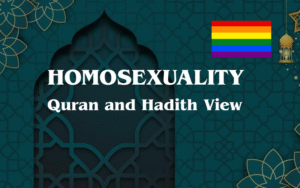Cosmology in the Quran: Astonishing Harmony with Science

Humanity has always been curious about the origin of its existence and the creation of this vast universe. Where did we come from? How were this sky, this earth, these planets, and stars formed? In the last few centuries, modern science has made revolutionary discoveries in its quest to answer these questions. On the other hand, the Holy Quran, revealed approximately 1400 years ago and an open encyclopedia of knowledge, provides clear descriptions of creation. The study of cosmology in the Quran reveals astonishing details.
What is astonishing is the profound and remarkable similarity between these recent scientific discoveries and the Quran’s descriptions. Allah (SWT) says, “And on the earth are signs for those who have Faith with certainty.” (Surah Adh-Dhariyat, 51:20). In this article, we will explore these signs and the harmony between the Quran and modern science regarding the creation of the heavens and the earth.
1. The Beginning of the Universe: The Big Bang Theory in Quran
From a Scientific Perspective:
One of the greatest discoveries of the 20th century is the ‘Big Bang’ theory. According to this theory, approximately 13.8 billion years ago, the entire universe—all matter, energy, space, and time—was concentrated into an incredibly small and hot ‘singularity.’ It then began to expand from a massive explosion, and that expansion continues today.
In the Light of the Quran:
In the Holy Quran, an ayah (verse) is found that bears a striking resemblance to this concept of the Big Bang, described centuries before its scientific discovery:
أَوَلَمْ يَرَ الَّذِينَ كَفَرُوا أَنَّ السَّمَاوَاتِ وَالْأَرْضَ كَانَتَا رَتْقًا فَفَتَقْنَاهُمَا ۖ وَجَعَلْنَا مِنَ الْمَاءِ كُلَّ شَيْءٍ حَيٍّ ۖ أَفَلَا يُؤْمِنُونَ
“Have those who disbelieved not considered that the heavens and the earth were a joined entity (ratq), and We separated (fataq) them and made from water every living thing? Then will they not believe?”
(Surah Al-Anbiya, 21:30)
Here, the Arabic word ‘ratq’ (رَتْق) means ‘sewn together’ or ‘a unified entity,’ and ‘fataq’ (فَتَق) means ‘to tear apart’ or ‘to separate.’ The verse clearly states that the heavens and the earth were once one, and then they were separated.
Many researchers, like the Canadian scientist Dr. Maurice Bucaille, consider this verse a clear acknowledgment of the Big Bang theory. Dr. Gary Miller, commenting on this verse, stated that it would be impossible for an unlettered man in the deserts of Arabia 1400 years ago to speak of this profound mystery of the universe’s creation unless it was revelation from the Creator.
2. The Primordial ‘Smoke’ (Dukhan) and Cosmology in the Quran
From a Scientific Perspective:
After the Big Bang, the early universe was not transparent. Instead, it was an opaque ‘gaseous cloud’ or ‘smoke’ filled with plasma, particles, and radiation. Millions of years later, these gaseous particles clumped together to form atoms, which became the raw material for today’s stars and galaxies.
In the Light of the Quran:
The Quran refers to this primary state of the universe as ‘dukhan’ (دُخَان) or ‘smoke.’ Not only that, but the Quran also describes a sequence in the creation of the earth and the heavens:
قُلْ أَئِنَّكُمْ لَتَكْفُرُونَ بِالَّذِي خَلَقَ الْأَرْضَ فِي يَوْمَيْنِ… وَجَعَلَ فِيهَا رَوَاسِيَ مِن فَوْقِهَا وَبَارَكَ فِيهَا وَقَدَّرَ فِيهَا أَقْوَاتَهَا فِي أَرْبَعَةِ أَيَّامٍ سَوَاءً لِّلسَائِلِينَ. ثُمَّ اسْتَوَىٰ إِلَى السَّمَاءِ وَهِيَ دُخَانٌ
“Say, ‘Do you indeed disbelieve in He who created the earth in two days…? And He placed on it firm mountains from above it, and He blessed it and determined therein its sustenance in four days without distinction for [all] callers.’ Then He directed Himself to the heaven while it was smoke (dukhan)…”
(Surah Fussilat, 41:9-11)
These verses clarify two points:
- The primary material of the universe was ‘smoke’ or a gaseous cloud, which aligns with modern science’s ‘Primordial Nebula’ theory.
- The Quran describes a sequence of creation (referred to as ‘days’ or ‘eons’), where the formation of the earth and heavens was completed in stages.
3. The Expanding Universe: The Quran’s Verse on Cosmic Expansion
From a Scientific Perspective:
In 1929, astronomer Edwin Hubble proved that galaxies are moving away from each other. This means the universe is not static; it is constantly expanding.
In the Light of the Quran:
This expansion of the universe was clearly indicated in the Quran 1400 years ago:
وَالسَّمَاءَ بَنَيْنَاهَا بِأَيْدٍ وَإِنَّا لَمُوسِعُونَ
“And the heaven We constructed with strength, and indeed, We are [its] expander (la-musi’un).”
(Surah Adh-Dhariyat, 51:47)
The word ‘la-musi’un’ (لَمُوسِعُونَ) implies an ongoing process, meaning ‘one who expands’ or ‘one who is making it vast.’ This is a stunning Quranic description of the expanding nature of the universe. This alignment between modern science and cosmology in the Quran is profound.
4. Earth’s Dynamic Motion: The Quran on Rotation and Orbits
For ages, humans considered the Earth to be stationary. However, the Quran hinted at its motion from the very beginning.
1. Earth’s Rotation:
The Earth’s rotation on its axis, which causes day and night, is described beautifully:
خَلَقَ السَّمَاوَاتِ وَالْأَرْضَ بِالْحَقِّ ۖ يُكَوِّرُ اللَّيْلَ عَلَى النَّهَارِ وَيُكَوِّrُ النَّهَارَ عَلَى اللَّيْلِ
“He created the heavens and earth in truth. He wraps (yukawwiru) the night over the day and wraps the day over the night…”
(Surah Az-Zumar, 39:5)
The word used here, ‘yukawwiru’ (يُكَوِّرُ), means ‘to wrap’ or ‘to coil’ something around a spherical object (like a turban). This cyclical wrapping of day and night upon each other is only possible with the rotation of a spherical Earth.
2. Earth’s Orbit:
The Earth not only spins on its axis but also ‘swims’ or ‘floats’ in a specific orbit around the sun:
كُلٌّ فِي فَلَكٍ يَسْبَحُونَ
“…each (the sun, the moon) floating (yasbahun) in an orbit.”
(Surah Yasin, 36:40)
The word ‘yasbahun’ (يَسْبَحُونَ) (to swim or float) paints a unique picture of an object moving with its own motion, which is consistent with the modern concept of Earth’s orbital motion around the sun. These descriptions of celestial mechanics are central to the cosmology in the Quran.
5. Earth’s Geology, Environment, and Cosmology in the Quran
Water as the Origin of Life:
Science states that life began in water and that water is the primary component of every living cell. The Quran declared this scientific fact unequivocally: “…And We made from water every living thing.” (Surah Al-Anbiya, 21:30).
The Source of Groundwater:
Regarding the groundwater we extract using wells or pumps, the Quran states its origin:
وَأَنزَلْنَا مِنَ السَّمَاءِ مَاءً بِقَدَرٍ فَأَسْكَنَّاهُ فِي الْأَرْضِ
“And We sent down water from the sky in measured quantity and lodged it in the earth…”
(Surah Al-Mu’minun, 23:18)
The Role of Mountains (Geology):
Modern geology explains that mountains act as stabilizers for tectonic plates and have deep ‘roots’ extending into the ground. The Quran describes mountains in this exact role—as ‘pegs’ (awtada) that provide stability:
أَلَمْ نَجْعَلِ الْأَرْضَ مِهَادًا. وَالْجِبَالَ أَوْتَادًا
“Have We not made the earth a resting place? And the mountains as pegs (awtada)?”
(Surah An-Naba, 78:6-7)
6. Cosmic Structures: The Quran on Galaxies, Stars, and Black Holes
The Quran gives astonishing hints not just about Earth, but also about the structures of deep space.
Galaxies (Buruj):
The Quran uses the word ‘Buruj’ (بُرُوج), meaning ‘great constellations,’ ‘mansions of the stars,’ or ‘cosmic fortresses.’ In modern terms, this can be interpreted as ‘galaxies’ or ‘constellations.’
تَبَARكَ الَّذِي جَعَلَ فِي السَّمَاءِ بُرُوجًا وَجَعَلَ فِيهَا سِرَاجًا وَقَمَرًا مُّنِيرًا
“Blessed is He who has placed in the sky great stars (Buruj) and placed therein a lamp (the sun) and a moon giving light.”
(Surah Al-Furqan, 25:61; see also Surah Al-Hijr, 15:16)
Stars as Lamps:
The Quran speaks of decorating the nearest heaven with stars:
وَلَقَدْ زَيَّnَّا السَّمَاءَ الدُّنْيَا بِمَصَابِيحَ
“And We have certainly beautified the nearest heaven with lamps (masabih)”
(Surah Al-Mulk, 67:5)
Black Holes:
One of the most mind-bending discoveries of 20th-century science is the ‘Black Hole’—a cosmic location whose gravity is so immense that even light cannot escape. It is essentially the ‘falling place’ of a ‘dead star.’ The Quran swears an oath by the locations where stars fall:
فَلَا أُقْسِمُ بِمَوَاقِعِ النُّجُومِ. وَإِنَّهُ لَقَسَمٌ لَّوْ تَعْلَمُونَ عَظِيمٌ
“So I swear by the setting of the stars (mawaqi’ an-nujum). And indeed, it is an oath – if you only knew – that is immense.”
(Surah Al-Waqi’ah, 56:75-76)
Elsewhere, it speaks of stars that ‘hide’ or ‘disappear’ and then reappear (like a pulsar) or hide completely (like a black hole):
فَلَا أُقْسِمُ بِالْخُنَّسِ. الْجَوَارِ الْكُنَّسِ
“So I swear by the retreating stars (al-khunnas). Those that run [their courses] and disappear (al-jawaril kunnas).”
(Surah At-Takwir, 81:15-16)
7. The End of the Universe: The Quran on the ‘Big Crunch’
Just as science has found a beginning (the Big Bang), it has also posited a potential end, known as the ‘Big Crunch.’ According to this theory, the universe’s expansion will one day stop, and everything will collapse back into a single point.
The Quran describes this final end of the universe:
يَوْمَ نَطْوِي السَّMَاءَ كَطَيِّ السِّجِلِّ لِلْكُتُبِ ۚ كَمَا بَدَأْنَا أَوَّلَ خَلْقٍ نُّعِيدُهُ
“The Day when We will fold the heaven like the folding of a [written] scroll. As We began the first creation, We will repeat it…”
(Surah Al-Anbiya, 21:104)
Conclusion
When we look at the latest discoveries of modern science regarding cosmology—be it the Big Bang, the expanding universe, the rotation and orbit of the Earth, or complex concepts like black holes—we find an incredible and precise harmony with the descriptions in the Holy Quran in every case.
This harmony between science and Quran is remarkable. This specific harmony regarding cosmology in the Quran unequivocally proves that the Quran is not the work of any human. Rather, it is the word of that Great Creator who created every atom of this universe and is perfectly knowledgeable of all its mysteries.
Frequently Asked Questions
What does the Quran say about the Big Bang?
The Quran (Surah Al-Anbiya, 21:30) states that the heavens and the earth were once a "joined entity" (ratq), and then Allah (SWT) "separated them" (fataq), which directly aligns with the scientific concept of the Big Bang.
Does the Quran say the universe is expanding?
Yes, Surah Adh-Dhariyat (51:47) says, "And the heaven We constructed with strength, and indeed, We are [its] expander (la-musi'un)," clearly indicating that the universe is in a continuous state of expansion.
Are black holes mentioned in the Quran?
The Quran (Surah Al-Waqi'ah, 56:75-76) swears an oath by "the setting of the stars (mawaqi' an-nujum)." This description of stars "falling" or reaching their end is seen by many scholars as a reference to black holes.









